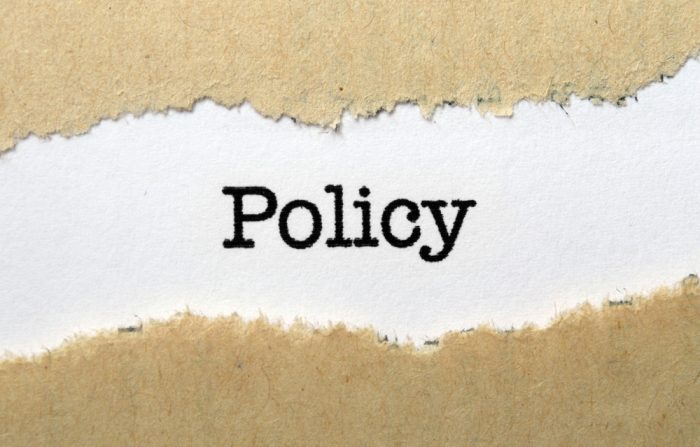
Table of Contents
The boss has to make a decision—cut funding or not? What are the practical ramifications either way? With the help of a policy brief, the boss can see what the issues are. A policy brief is like a fine filter that distills the essence of the subject to its fine points. When the boss has to act, he has to know the facts—and that’s where policy brief writing comes into play.
This article will look at how to write and format a policy brief. We’ll include a policy brief template that you can download as well. Plus, we’ll give you an example policy brief so you can see exactly what they look like.
A policy brief is a type of paper that delivers concise, summative information to a reader who needs to know all the necessary info but who is neither a specialist in the subject area nor has his mind made up one way or another. Many professionals and administrators rely on policy briefs because they don’t have time to research key issues and areas on their own. Policy advisors will write up a brief so that the leader can make a decision based on accurate information.
A typical policy brief will be a page or two in length. Leaders want information fast. They don’t have time to sit down and read a 12 page article, parse out the important parts, and reflect on what they’ve read. The policy brief writer has to do the reflecting for the reader. It should present conclusions—not ideas for generating interest and further research.

First, consider the audience. Policy briefs are not always going to be written for one’s boss. Sometimes they are written for a general readership audience who has a particular stake in the subject.
For example, a policy brief could be written for congressmen, for investors, for consumers, or for regulators. For the brief to be effective, it has to be written with a specific audience in mind. Every audience is likely to have a different background on the subject—so tailoring the brief to meet the needs of the audience is highly important.
If you don’t know the audience, get to know them. That will allow you to target specific areas based upon the readers’ needs. The more you know about the audience, the more effective you can make the policy brief.
Tips for getting to know your audience:

Second, consider the use of tone and terminology. A policy brief is not an academic article though it may sound like one. The tone should be informational but not high-brow.
Assume the reader is not well-versed in the “jargon” used by professionals and scholars who write about your subject. Keep the terms simple. Even if your audience is knowledgeable, you don’t have to spruce up the writing by adopting the lexicon of a scholar. Simple and direct is best. Less is more.
Tips for considering the use of tone and terminology:
Third, consider the purpose of the policy brief. What is the aim? The aim is to help the reader decide on a direction to pursue. The writer of the policy brief does not have to make the decision for the reader—but it does have to explain the options and the likely outcomes of each.
The policy brief should thus provide background information on the issue, the various strategies that could be applied, the pros and cons of each, and which approach is likely to be the most beneficial. The best policy brief will propose a solution to an issue that can be solved at the level of policy.
Tips for considering the purpose of the policy brief:
Use headings to structure the report. The policy brief should be easy to read—and that means it should be organized. The reader will want to be able to identify the most important parts of the brief easily by scanning the headings.
Headings should be focused, clear and to the point. Headings are like road signs that show the reader where he is in the brief. For more information on this, see below for our policy brief format.
Tips for structuring the report:
Keep the brief focused on the main issue. Do not get sidelined with noise or background information. Digressions have no place in a policy brief. For that reason, the policy brief should be specific and should be restricted to one subject only.
Identify the problem you want to address at the outset and make sure it is a problem that can be addressed by the implementation of some policy. Problems should not be broad or general but rather specific and defined.
Tips for keeping the brief focused:

The title should effectively communicate the subject of the policy brief. It should also be memorable so that the brief can easily be remembered and turned to when the issue addressed in the brief comes up. A policy brief with a poor title will not stay long in the mind of the reader.
The executive summary is where you summarize the main points of the policy brief. It should not be any longer than a paragraph or two. Here you can briefly give an overview of what the report states, what the problem is and how it can be addressed via policy.
This section will be the start of the policy brief proper. It is where the main problem is described and the need for policy to be developed and implemented. This section essentially spells out why policy is required.
In this section, the different options that the policy makers can pursue are explained. This section should just include the facts about the different policy options that could be used. It should represent each option fairly and objectively, with pros and cons for each.
In this section, specific steps should be given to explain what policy should be used to answer the problem. The policy recommendation should be explained and then it should be defined how it can be implemented. A concrete plan for implementation should be included.
In this section, extra materials can be supplied the reader to help expand on any points made earlier in the policy brief. These add-ons can be used to explain why the policy recommendation is appropriate or to provide supporting facts.
In this section, the reader can see what sources of information the writer used or consulted when writing the policy brief.
Headers should be used to separate the sections of the policy brief. Headers should be specific and clear so that each section can be easily identified. Headers should be centered or left justified and bolded so that they can be quickly seen by the reader.
Title
[You title goes here and should indicate the subject of the policy brief.]
Executive Summary
[Your executive summary goes here. This should explain what is to come in the policy brief, point by point. The problem, the options and the recommendations should all be described here.]
Scope of Problem
[This is where you describe the main problem that the policy brief is to address. The problem should be defined clearly. The need for a solution should be evident. Some connection should be made between the research you have conducted and the issue that the policy makers have to address.]
Policy Options
[This is where you describe the various policy options that could be used to solve the problem. This is where your research should come into play especially. The current policy should be described in this section. The different alternatives should also be explained here.]
Policy Recommendations
[Here the writer makes recommendations about what policy should be pursued. An explanation should be given as to why this policy choice would best solve the problem. The writer should also include an explanation of how this policy recommendation would impact the lives of people.]
Appendices
[This is where you include any extra material that could be useful in helping the reader to understand the points you make in the policy brief.]
Sources
[This is where you include references to the sources you used in the preparation of the material.]
View or Download this policy brief template in ms word format (.docx) or adobe pdf format (.pdf) for free!

Policy Paths for Addressing Discrimination in the Public Workplace
What is the Problem?
Discrimination is a major issue in the public workforce. The Civil Rights Act was legislation that made it illegal to discriminate against workers. However, discrimination still occurs under the radar or in ways that are not easily identified. For instance, the wage gap is a problem in the public workforce and is a form of discrimination that has not been addressed in recent years. Men are paid more than women for their labor and this is an issue that can create tension in the workplace and in culture.
This is particularly a problem for women in the workforce because they feel unappreciated and undermined when they sense they are being paid less their male counterparts. They feel passed over when it comes to promotions. A sense of inequality within the established order of business can lead to workplace tension, turnover, and instability, which can have profound effects on economy and society. The recent #MeToo movement is a perfect example of how women are using social media to respond to problems they have faced in the workplace. Many companies and personnel have come under fire, including large corporations like Google. Discrimination is therefore a major problem that not only affects workers but also indirectly impacts shareholders.
The issue that needs to be addressed by policy makers is this: what can policy makers do to curb discrimination in a practical manner so that stealth discrimination can be mitigated?
The current policy that exists regarding discrimination in the workplace is based on the Civil Rights Act. The policy stipulates that no discrimination against race, gender, ethnicity, age, sex, religion, or disability shall be tolerated in the workplace. It defines each type of discrimination in general terms. However, it does not define different ways in which discrimination against women may take place by way of stealth discrimination—i.e., in ways that are not explicitly stated but are recognized only over time and in minute ways.
Kim (2013) has shown that there are a number of options available to address this issue, particularly with respect to discrimination via the gender pay gap. One possibility is to unionize women in the workforce. This would give women the power to negotiate fair wages with companies. The benefit of this option is that would help to reduce discrimination on this front. The drawback is that it might cause problems among corporate leaders who do not like to give up power to unions.
Another option would be to support legislation that ensures pay secrecy. The benefit of this legislation would be that it ensures there is no sense of one person being discriminated against in terms of wages. However, it would not guarantee that discrimination would be reduced—and it is also unlikely that earnings are really kept secret, as word inevitably gets out.
A third option would be to support stronger affirmative action. This would ensure that every workplace has equality in terms of people of various backgrounds working together. However, this policy approach does not necessarily address the persistent issue of discrimination in terms of the wage gap.
Best Approach
The policy recommendation for best addressing this issue is that women be unionized. While this would present certain problems for businesses, it would be the most effective way to address stealth discrimination, which is the main problem that has to be solved today. The union advantage for women is particular strong in that it can ensure that stealth discrimination is reduced as the union will be able to negotiate on behalf of women and make sure that employers are not engaging in any type of stealth discrimination with respect to wages. The union will be able to monitor and assess how every company pays its employees and see to it that fairness and equality are delivered in every instance.
The Impact of This Policy
This would impact the lives of women in a positive way and provide them with the stability and assurance they require to know they are supported in the workplace and treated with equitability. This policy would also impact the way in which organizations and businesses approach the issue of paying workers. It would likely lead to the total unionization of the workplace and it could possibly end with wages being determined by a third party when all is said and done: yet that would still mean that it is a victory for equality.
Already unions help to ensure that women are paid more fairly. As Gould and McNicholas (2017) point out at the Economic Policy Institute, “working women in unions are paid 94 cents, on average, for every dollar paid to unionized working men, compared with 78 cents on the dollar for non-union women as a share of nonunion men’s dollar. Furthermore, hourly wages for women represented by unions are 23 percent higher than for nonunionized women.” This shows that unions are an effective way to address wage discrimination, which is a form of stealth discrimination that most needs to be eliminated in the workplace.
How Business Leaders Can Play a Part
The difficulties that business leaders may face in having to deal with the unionization of all women is not so great that it takes away from this solution: however, it would be helpful to get the support of prominent business leaders before enacting this policy. This would show that the business community does in fact support equality in the workplace and that they do want to work together towards achieving a solution primarily by supporting women’s organization and unionization. It would also give business leaders the opportunity to get out in front of the changes and make recommendations and be part of the process overall.
Anderson, J., Hegewisch, A. & Hayes, J. (2015). The union advantage for women. Institute for Women’s Policy Research. Retrieved from https://iwpr.org/publications/the-union-advantage-for-women/
Gould, E. & McNicholas, C. (2017). Unions help narrow the gender wage gap. Retrieved from https://www.epi.org/blog/unions-help-narrow-the-gender-wage-gap/
Kim, M. (2013). Policies to end the gender wage gap in the United States. Review of Radical Political Economics, 45(3), 278-283.
When writing a policy brief, it is important to remember that you are supplying key points to a specific audience to help that reader or group of readers to arrive at the best possible decision they can make in terms of policy. The policy brief should be streamlined and to the point. It is not a research paper that provides all the details expected of such. Rather it is exactly as it sounds—a brief that a policy maker can use to make a decision about the best way to approach a problem or issue.
For that reason, every policy brief should be written to address a specific issue or problem. The policy brief writer must have a clear understanding of what the issue is and what factors most impact it. The writer must also have a clear sense of how the various players will be impacted by the recommended policy. Every policy brief should conclude with at least one policy recommendation so the reader can have a sense of which approach is best and why.
As always, if you would like help writing your own policy brief, do not hesitate to order your model policy brief today!

Comments